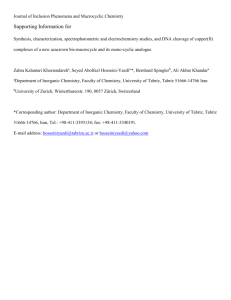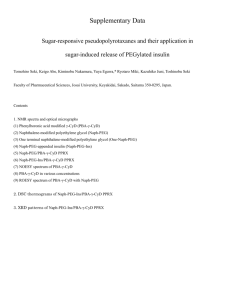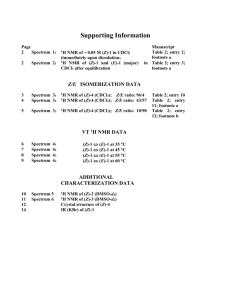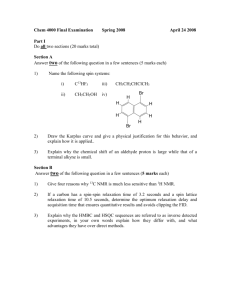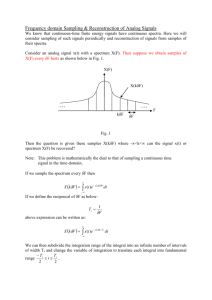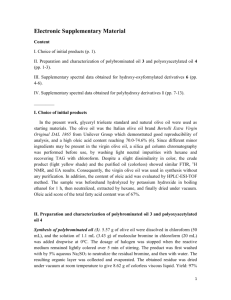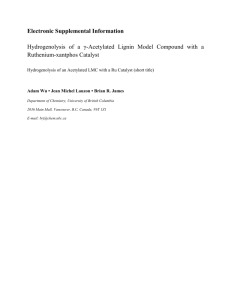LOLEDs_degradation SI
advertisement
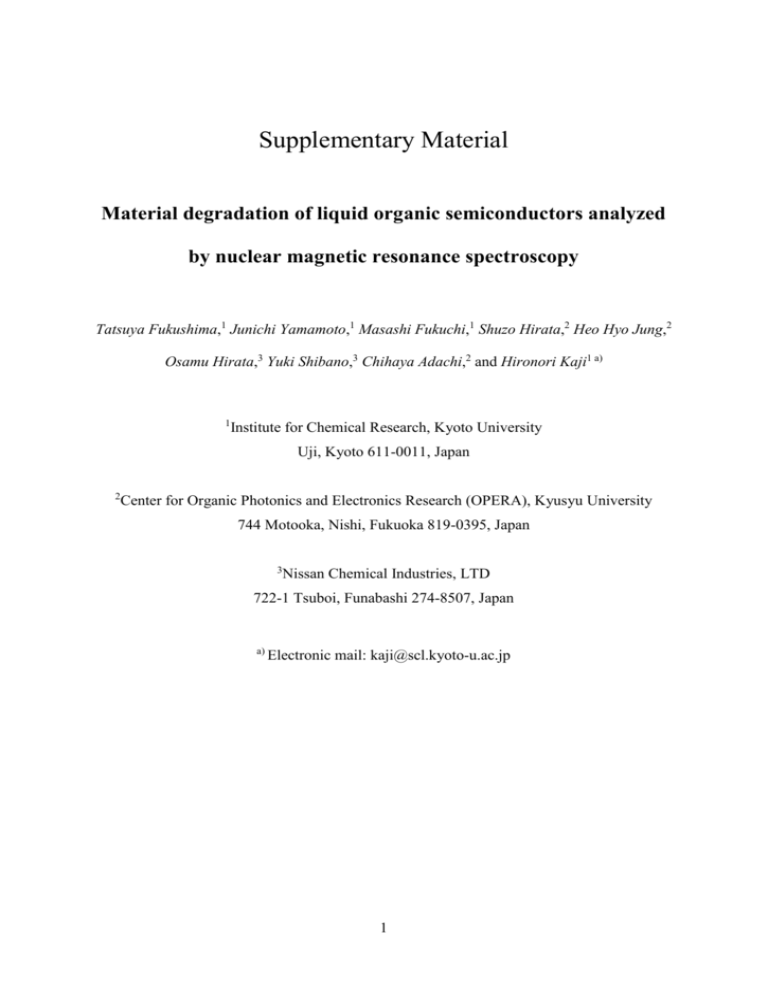
Supplementary Material Material degradation of liquid organic semiconductors analyzed by nuclear magnetic resonance spectroscopy Tatsuya Fukushima,1 Junichi Yamamoto,1 Masashi Fukuchi,1 Shuzo Hirata,2 Heo Hyo Jung,2 Osamu Hirata,3 Yuki Shibano,3 Chihaya Adachi,2 and Hironori Kaji1 a) 1 Institute for Chemical Research, Kyoto University Uji, Kyoto 611-0011, Japan 2 Center for Organic Photonics and Electronics Research (OPERA), Kyusyu University 744 Motooka, Nishi, Fukuoka 819-0395, Japan 3 Nissan Chemical Industries, LTD 722-1 Tsuboi, Funabashi 274-8507, Japan a) Electronic mail: kaji@scl.kyoto-u.ac.jp 1 FIG. S1. 1 H NMR spectrum of TEGCz with 0.25 wt% TMP-TFSI in CD2Cl2 solution at 278.2 K. Chemical structure and assignments of TEGCz are also shown. 2 FIG. S2. COSY spectrum of TEGCz in CD2Cl2 solution at 278.2 K. The red square region is expanded in Figure S3 and S4. 3 FIG. S3. Expanded COSY spectrum of TEGCz in CD2Cl2 solution at 278.2 K. The distinction of M1 and M2 is based on effects of an electronegative atom (nitrogen) on the carbazole moiety. The distinction of M1/M2 and M3/M4 is based on J-coupling (doublet vs triplet). 4 FIG. S4. Expanded COSY spectrum of TEGCz in CD2Cl2 solution at 278.2 K. 5 FIG. S5. 1H NMR spectrum of (TEGCz)2 with 0.25 wt% TMP-TFSI in CDCl3 solution at 298.2 K. Chemical structure and assignments of (TEGCz)2 are also shown. 6 FIG. S6. COSY spectrum of (TEGCz)2 in CDCl3 solution at 298.2 K. The red square region is expanded in Figure S7 and S8. 7 FIG. S7. Expanded COSY spectrum of (TEGCz)2 in CDCl3 solution at 298.2 K. 8 FIG. S8. Expanded COSY spectrum of (TEGCz)2 in CDCl3 solution at 298.2 K. 9 FIG. S9. 1H NMR spectra of TEGCz with 0.25 wt% TMP-TFSI; a) before, after driving for b) 11 s, c) 30 s, and d) 50 s. 1H NMR spectrum of (TEGCz)2 with 0.25 wt% TMP-TFSI before driving is also shown in e) for comparison. 10 FIG. S10. 1H NMR expanded spectra of TEGCz with 0.25 wt% TMP-TFSI; a) before, after driving for b) 11 s, c) 30 s, and d) 50 s. 1H NMR spectrum of (TEGCz)2 with 0.25 wt% TMPTFSI before driving is also shown in e) for comparison. * marks in the figure represent carbon satellites for the peaks of TEGCz at 4.51 and 3.85 ppm. The resonance lines at 4.56 and 3.90 ppm, which were not observed in Figure S10a (before driving), were clearly found in all of Figure S10b–d (after driving). The newly appeared peaks in the device after driving in Figure S10b–d at 4.56 and 3.90 ppm agree well with the resonance lines of (TEGCz)2 in Figure 10e. 11 FIG. S11. 1H NMR expanded spectra of TEGCz with 0.25 wt% TMP-TFSI; a) before, after driving for b) 11 s, c) 30 s, and d) 50 s. 1H NMR spectrum of (TEGCz)2 with 0.25 wt% TMPTFSI before driving is also shown in e) for comparison. 12
